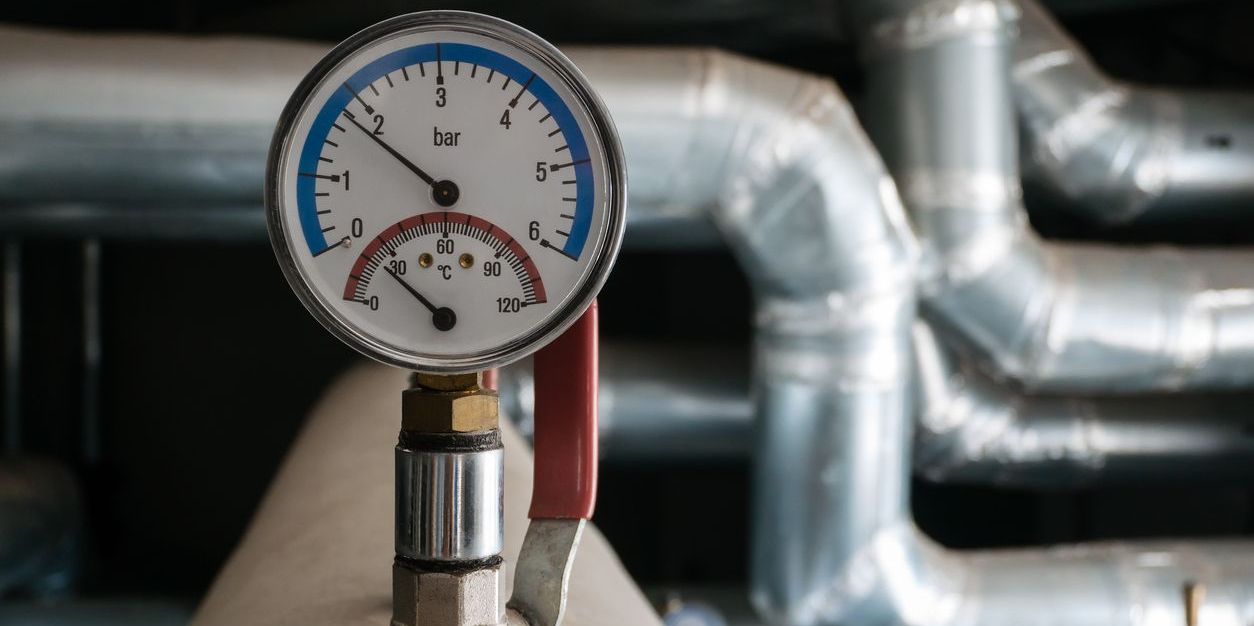What is a Steamfitter?
A steamfitter installs and maintains pipes that carry high-pressure substances like steam, gases, or hot liquids. These systems are used in places like power plants, factories, and heating systems for large buildings. Steamfitters work with metal pipes, using tools to cut, bend, and weld them into place.
Their work is very important because these high-pressure systems need to be safe and work properly. Steamfitters must carefully follow blueprints and safety codes to make sure the systems don’t leak or break. They often use advanced tools like pressure gauges and welding equipment to do their job.
What does a Steamfitter do?

Duties and Responsibilities
Steamfitters play a vital role in installing and maintaining piping systems that transport high-pressure materials. Common duties and responsibilities include:
- Installation of Piping Systems: Steamfitters are responsible for installing piping systems that carry steam, water, or other liquids in industrial, commercial, or residential settings. They follow blueprints and diagrams to measure, cut, and assemble pipes, ensuring that all connections are secure and meet safety standards.
- Maintenance and Repair of Piping Systems: Steamfitters also maintain and repair existing piping systems to ensure they continue to operate efficiently. This can involve replacing damaged pipes, tightening loose connections, or adjusting the system to accommodate changes in pressure or temperature.
- Testing and Inspection of Piping Systems: Steamfitters test piping systems after installation or repairs to ensure that they are safe and functional. They use pressure gauges, leak detectors, and other testing tools to check the integrity of the system.
- Welding and Fabrication of Pipes: Steamfitters may be required to weld or fabricate pipes to create custom fittings or adjustments for a piping system. They need specialized welding skills and the ability to read blueprints or technical drawings to ensure precise measurements.
- Adherence to Safety Protocols: Steamfitters must always follow strict safety standards to protect themselves and others while working with pressurized systems and potentially hazardous materials. This includes wearing protective gear, understanding safety protocols for working with hot steam, and ensuring that the work area is clear of any hazards.
Types of Steamfitters
Here are some types of steamfitters, each focusing on specific areas within the field:
- Industrial Steamfitters: Industrial steamfitters work in industrial settings like factories and power plants, installing and maintaining large, high-pressure piping systems that carry steam, gas, or other substances used in production processes.
- Commercial Steamfitters: Commercial steamfitters focus on non-residential buildings like offices, schools, and hospitals, installing and maintaining heating, cooling, and plumbing systems essential for these facilities.
- Residential Steamfitters: Residential steamfitters work in homes, installing and repairing heating systems, water pipes, and other steam-related systems in residential buildings.
- HVAC Steamfitters: HVAC steamfitters specialize in installing and maintaining heating, ventilation, and air conditioning systems that use steam or hot water for temperature control in various buildings.
- Process Steamfitters: Process steamfitters work in manufacturing plants, installing and maintaining piping systems that carry materials like chemicals or steam for industrial processes.
Steamfitters have distinct personalities. Think you might match up? Take the free career test to find out if steamfitter is one of your top career matches. Take the free test now Learn more about the career test
What is the workplace of a Steamfitter like?
The workplace of a steamfitter is often varied, depending on the type of work they do. Steamfitters can be found in industrial settings such as power plants, factories, and chemical processing plants. These environments typically involve working with high-pressure piping systems that require strong attention to safety and precision. Steamfitters may spend their days in large facilities, installing or repairing complex systems that carry steam or other materials for industrial use.
In addition to industrial workplaces, steamfitters also work in commercial and residential settings. They might be found working on construction sites or in existing buildings where they install or maintain heating, cooling, and plumbing systems. For example, they might work on HVAC systems in office buildings, hospitals, or schools, ensuring that these systems are running efficiently and safely. In residential settings, steamfitters install heating systems or water pipes to ensure homes are properly supplied with hot water and heat.
The work environment can also vary depending on the location of the project. Steamfitters often work outdoors, on scaffolding, or in tight spaces, which can require physical labor and sometimes working in challenging conditions. However, safety is a primary concern, and steamfitters must follow strict guidelines to ensure their own safety and the safety of those around them.
Frequently Asked Questions
Construction and Trade-Related Careers and Degrees
Careers
- Building Inspector
- Carpenter
- Concrete Worker
- Construction Engineer
- Construction Manager
- Construction Worker
- Drywall Installer
- Electrician
- Heavy Equipment Operator
- HVAC Technician
- Ironworker
- Mason
- Painter
- Paving Stone Installer
- Pipefitter
- Pipelayer
- Plasterer
- Plumber
- Rigger
- Roofer
- Sheet Metal Worker
- Steamfitter
- Stone Cutter
- Tile and Marble Setter
- Welder
Degrees
- Building Inspection
- Carpentry
- Construction Engineering
- Construction Management
- Electrical Engineering Technology
- Electrical Technology
- Heavy Equipment Operation
- Masonry
- Plumbing
- Refrigeration, Air Conditioning, Heating and Gas Technology
- Welding
Steamfitters are also known as:
Steam Fitter